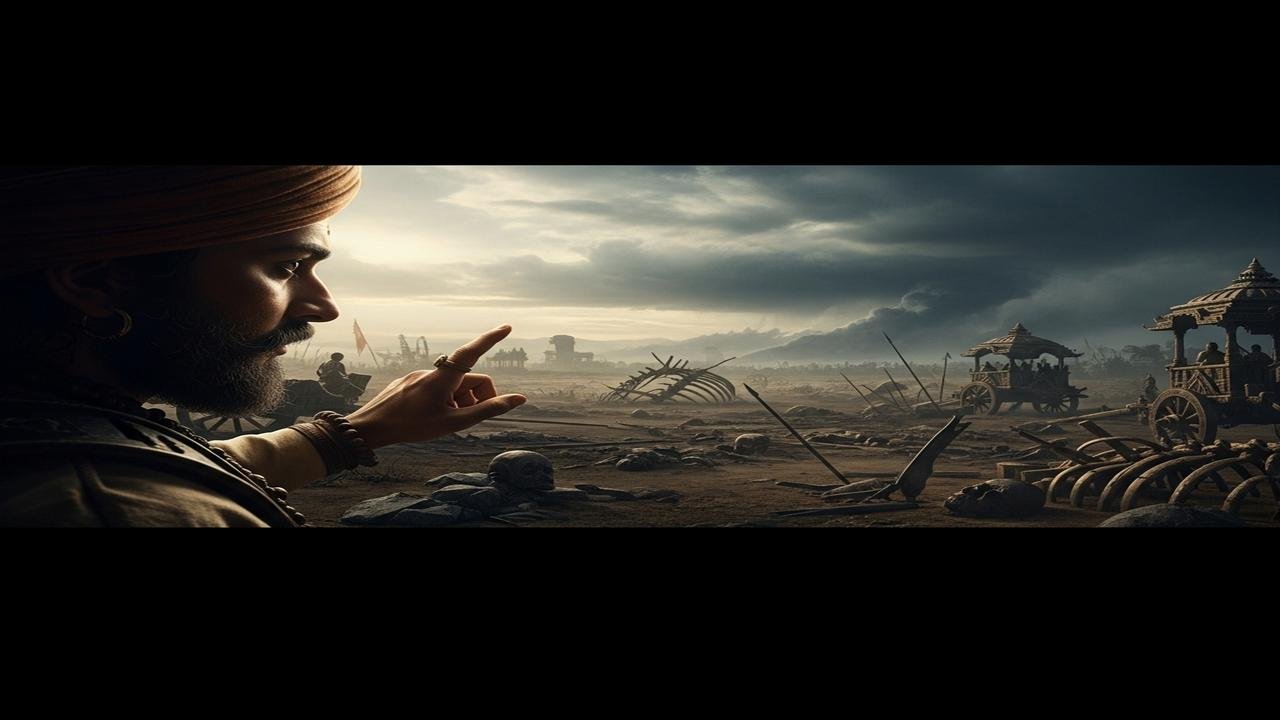Arjuna’s Warning in Bhishma Parva: How War Destroys Dharma

Opening: where Arjuna voices a wider fear
In the Bhagavad Gītā — the dialog set in the heart of the Mahābhārata war — Arjuna articulates not merely a personal reluctance to fight but a predictive argument about how a war among kin will erode social and moral order. He warns that the immediate act of killing kinsmen will set in motion a chain of consequences that destroy family traditions, social roles and, ultimately, dharma — ethical duty and the sustaining order of society.
Arjuna’s words in context (Bhīṣma Parva)
Arjuna’s speech appears in chapter 1 of the Gītā (Bhīṣma Parva, Mahābhārata, Book 6), especially verses 1.40–1.46. Faced with the prospect of slaughtering teachers, cousins and elders, he asks how any good can come from victory won at such a price. His argument is concrete and consequential: the death of household leaders (pitṛs, elders) will lead to the decay of family rites, loss of reputation, and confusion about right conduct. That confusion, Arjuna says, will open the door to adharma — unrighteousness — and resulting social collapse.
What exactly did Arjuna predict?
- Family collapse: When heads of families are killed, the transmission of rites, duty and economic stability breaks down.
- Confusion over duty: People will lose clarity about roles (varṇa and āśrama), leading to a breakdown in social norms.
- Vulnerability of women and lineage: Arjuna fears that the loss of male protectors will expose women to dishonour and jeopardize the continuation of proper family lines.
- Cycle of hatred and sin: Acts of killing will breed hatred and sinful consequences that undermine social order and ethical behavior.
In his climactic statement, Arjuna concludes, “I will not fight” (Gītā 1.46). That refusal is framed as an attempt to prevent a cascading collapse of institutional and moral life.
Scriptural and theological context: war as a cause of dharma’s decline
Arjuna’s warning sits inside a broader corpus of Indian scripture that links warfare, disorder and the decline of dharma. The Mahābhārata itself repeatedly explores how righteous structures fray under war’s pressure. Later Purāṇas and Smṛti texts describe the ages (yugas), notably Kali Yuga, as periods in which dharma diminishes and adharma rises — sometimes traced back to large-scale violence and moral corruption.
Krishna’s reply later in the Gītā reframes the problem. In verses such as Gītā 4.7–4.8 he states that whenever unrighteousness prevails, the Divine incarnates to re-establish dharma. That the Gītā follows Arjuna’s prediction with this theodicy has shaped centuries of commentary: the moral worry Arjuna raises is real, but the text invites a deeper view of duty, action and cosmic order.
How commentators have read Arjuna’s prediction
- Traditional smārta and orthodox readings: Many classical commentators acknowledge the force of Arjuna’s social argument while insisting his paralysis arises from attachment and grief. The remedy, they say, is right action (karma-yoga) performed without selfish desire.
- Vaishnava and bhakti readings: These readings emphasise the need for surrender and divine guidance — Arjuna’s moral anxiety is answered by Krishna’s teaching that duty can be aligned with devotion to the Lord.
- Vedāntic/Advaita readings: For Advaita commentators, Arjuna’s fear is rooted in ignorance (avidyā) about the self; ethical ruptures are symptomatic of mistaken identity with the body and ego.
- Modern and ethical readings: Contemporary scholars often treat Arjuna’s speech as a legitimate social-ethical objection — a recognition that violent means can corrode moral life — not only a failing of will.
These readings are not mutually exclusive. Arjuna’s argument can be read as both a literal social concern and a symptom of deeper spiritual attachment; the Gītā uses the dilemma to unfold multiple registers of teaching.
Why this narrative still matters
Arjuna’s prediction resonates because it links action to institutional health. Rather than a mere emotional excuse, his words map a plausible causal chain: violence disrupts patterns of authority, economic maintenance and ritual continuity; those disruptions reshape norms and moral imagination. For many living traditions, the passage is a sober reminder of the long-term social costs of war and a prompt to ask how dharma is sustained beyond battlefield heroics.
Living traditions and contemporary reflection
Temple sermons, classical commentaries, dance-drama and modern sermons continue to rehearse this moment. In some Śaiva, Vaiṣṇava and Smārta communities it is cited as a lesson on prudence and duty; in academic and civil-society conversations it is read as an early ethical critique of war’s social fallout. The Gītā does not present a simple policy manual, but it does give a moral imagination that helps communities weigh ends and means.
Closing note
Arjuna’s prediction about the collapse of dharma through war is one of the Gītā’s most sobering passages: concrete, socially grounded and morally searching. Different traditions interpret his warning variously — as a call to dispassionate duty, divine surrender, or ethical restraint — but all take seriously the core insight that violent rupture reshapes not only bodies and borders but the moral fabrics that hold communities together.
